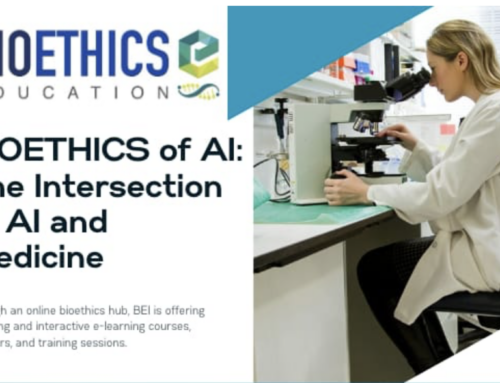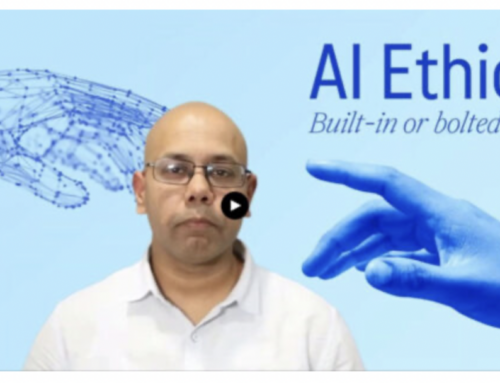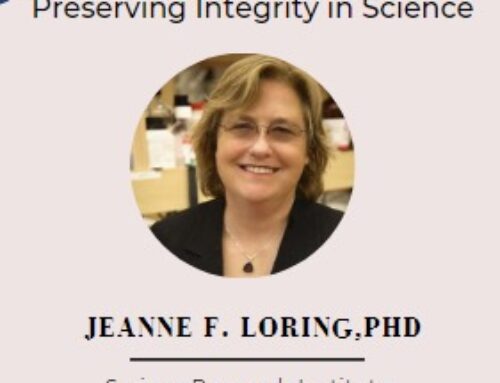Book Reviewed by Michael S. Dauber, MA
Cells Are The New Cure, written by Robin Smith, MD, and Max Gomez, PhD, is a book about the history of medical research on cells, both human and non-human, and recent developments in these techniques that have made cellular medicine one of the most promising fields for therapeutic exploration. While the book’s title suggests an exclusive focus on the healing aspects of genetic modification and human stem cell therapy, the text is much more than that: it is a roadmap for understanding the origins of such techniques, the current state of affairs in cellular and genetic therapies, the administrative landscape investigators must traverse in conducting research, and the areas in which we still need to make progress.
Smith and Gomez make an argument that is structurally simple yet gripping: they suggest that targeted therapies involving stem cells and genetic modifications are the future of medicine by pointing to the immense amount of studies in those fields that have yielded beneficial results. While many readers might acknowledge this fact even before reading the book, many may not be aware of the full extent of the knowledge we have gained from research on cells and genetics, or the myriad ways this knowledge has been applied. Of course, Smith and Gomez cover the big diseases that most people think of when imagining medical research: cancer, heart disease, neurodegenerative conditions, etc. However, the book also contains detailed information about how we age, what may cause certain allergies, how the body repairs itself, and the ways stem cell therapies, genetic editing techniques, and other complex medicines that build on these methods can be used to treat these conditions.
Part One, “The Promise of Regenerative Medicine,” discusses the ways stem cells have been used to treat conditions ranging from cancer to Alzheimer’s disease. It begins by providing readers with a basic understanding of the different kinds of stem cells (cells that have not begun to specialize to form the different tissues that comprise our organs). Specifically, they delineate between two different kinds of cells: embryonic stem cells, which come from human embryos, and induced pluripotent stem cells (iPSCs), cells that have already specialized (skin cells, for example), but been coaxed into de-specializing. The latter have a narrower range of options open for specialization, but, as the authors note, they avoid many moral dilemmas to which embryonic stem cells are subject (we’ll revisit this topic below).
Armed with this knowledge, readers are given a tour of the ways that stem cells can be used to help the body regenerate tissues like damaged heart muscles or damaged joints in Chapter One. In Chapter Two, the authors discuss the prospect of using stem cells to grow replacement organs for patients who were either born without certain essential tissues (like Luke Massella, who was born with spina bifida, a condition in which “the backbone fails to close completely around the spinal cord” (page 20)) or whose tissues have been damaged by cancer or other ailments. Chapter Three applies stem cell technology to treating strokes, Alzheimer’s disease, Parkinson’s disease, and amyotrophic lateral sclerosis (ALS, commonly known as Lou Gehrig’s Disease). The latter two discussions are perhaps the most compelling examples of the promise of stem cells. There are currently no significant treatments available for ALS, but stem cell experiments by Dr. Eva Feldman have been shown to at least slow the progression of the disease (page 49), suggesting a greater need for further stem cell experiments to treat ALS in the future. Similarly, trials have begun to test treatments for Parkinson’s disease, which is also currently incurable. Chapter Four tackles problems that have been difficult for researchers to solve in cancer treatments, namely, the treatment of graft versus host disease (a condition in which the body’s immune system fights against cells injected from a donor; the condition often occurs when bone marrow donors are not exact matches for their recipients) and the therapeutically impenetrable wall known as the blood-brain barrier. Researchers believe some stem cells may be able to one day cross the blood-brain barrier, a wall of tissue that prevents large molecules from entering the brain from the blood stream, preventing many current medications from successfully treating brain tumors and other diseases. Proposed treatments would involve injecting medicines into stem cells and then directing the cells, which may be small enough to pass through to the brain matter, through the barrier to deliver treatment.
Part Two, “Our Immune System As Weapon And Healer,” provides readers with an overview of the ways our immune system fights diseases, and suggests ways in which stem cells and other targeted therapies might be able to help us fight off certain diseases. The chapters are thorough, discussing not only the way our immune systems function and the diseases our immune systems fight against, but also the ways our immune systems can fail us by attacking our own tissues. One of the most interesting discussions occurs in Chapter Five, and concerns the ways immune system cells locate and attack foreign or diseased entities: they search for certain protein markers, and use these markers to determine whether or not to attack. Some cancer cells remain “invisible” to the immune system by using proteins like CTLA-4, which prevents T cells from attacking them (pages 72-74). However, certain drugs have been developed that block these protein receptors, allowing the immune system to properly recognize and destroy cancerous cells. In Chapter Six, the authors discuss the promise of stem cells to treat autoimmune conditions like type 1 diabetes by growing cells that can produce insulin within the body to replace the work of pancreatic cells that have been destroyed or damaged, and multiple sclerosis (MS), which scientists have begun treating experimentally by using stem cells to grow new immune system cells to replace defective cells that attack nerve cells in the brain. In Chapters Seven and Eight, the authors lay out a series of other conditions stem cell immune therapies can treat, such as food allergies, celiac disease, C. Difficile, and certain cancers.
Part Three, “Changing Our DNA—Rare Diseases and Designer Humans,” and Part Four, “Human 2.0,” take readers down the other promising sphere of medical research that has advanced significantly in recent years: the prospect of modifying the human genome to fight diseases and help extend human lives. Of particular interest to readers will be a discussion of CRISPR, a genetic editing technique that has recently allowed researchers to quickly and efficiently delete and insert specific genes in cells. While major CRISPR research is only just beginning in earnest, and serious ethical questions must be answered before many studies can proceed, the technique holds significant promise for many advancements in the years to come, as demonstrated by some of the experiments of the past few years, such as successfully removing a gene that causes heart failure from human embryos and removing genes that make pig hearts unsuitable for donation to humans. The authors also document the ways in which researchers are using CRISPR in experiments to cure Duchenne muscular dystrophy (by repairing genes responsible for producing dystrophin) and to fight cancer (by reprogramming immune system cells “to recognize specific proteins that mark the surfaces of cancer cells” (page 162)). Readers will also be interested in Chapter Thirteen, which discusses the ways in which we may be able to extend our lives by promoting the health of telomeres, protective caps at the ends of our chromosomes that determine the number of times our cells can divide. Telomere length has been shown to have a significant influence on our likelihood of developing diseases and in determining the length of our lives, and readers will be pleased to learn of the many studies underway that hold the possibility of increasing human life expectancy by modifying and repairing telomeres. Even more comforting, telomeres may be repaired just by making healthy lifestyle choices!
The book’s most controversial material comes in Chapter Twelve, which can be thought of as the chapter on ethics. The chapter specifically asks, “Should We Alter DNA?” and discusses some of the major concerns that have been raised against genetic modification, such as the creation of “designer humans” (individuals that have been modified to be tall, attractive, smart, etc.) and the possibility of creating a world in which discrimination and inequality are rampant (pages 180-181). However, one of the book’s most controversial subjects is addressed by omission: the authors do not devote significant attention to the ethical issues surrounding the use of human embryonic stem cells. True, the authors do mention embryonic stem cells early on in discussing the different kinds of stem cells researchers use, and quote a researcher, Dr. Eckhard Alt, who claims that other kinds of stem cells are more attractive and likely to reach mainstream medicine “’due to ethical reasons’” (quoted on page 7), but they do not explore what those considerations are: they do not discuss moral status (the property that makes it the case that something enters into moral considerations) or the various views on what moral status human embryos and embryonic stem cells possess, if they possess it at all. True, the “ethics chapter” of the book, Chapter Twelve, focuses on the ethics of modifying genetic material, not the ethics of using stem cells, so it would not be the wisest place for a discussion of the ethics of embryonic stem cell use to appear. Still, discussing those issues is a crucial part of understanding the realities of the current ethical paradigm in stem cell research.
Part Five, “Big Money, Big Data, And The Future Of Medicine,” provides a general overview of the ways clinical trials are developed, funded and executed, with an eye toward key developments to expect in the coming years. Chapter Thirteen, “Big Data Leads To Better Medicine,” discusses the ways health information and clinical trial data are recorded and utilized to foster major breakthroughs in collective research efforts, rather than small, individual studies. Perhaps the chief development among these efforts has been the advent of “drug libraries” (page 232), which collect information on drugs that have been approved, but that currently lack a specific purpose. Doctors can enter key information into these libraries to find drugs that may prove effective against patients who may not otherwise have any remaining treatment options. Chapters Sixteen and Seventeen discuss the funding of research through philanthropy (including several success stories and the ways individuals can contribute through small donations) and the rules, policies, and theory surrounding clinical trials. Chapter Eighteen, “Cells Will Be The Drugs Of The Future,” discusses current efforts underway to develop and implement stem cell, immune, and genetic editing therapies in the future.
By extensively detailing the tremendous promise of medicines that operate at the cellular level and therapies rooted in genetic material, Smith and Gomez make a compelling case that these techniques should be given even greater attention than they currently receive. The book provides a strong, detailed background in many areas of science and research, and is a rewarding read for both the hardcore science enthusiast and the casual reader taking his or her first steps toward understanding the innovative medicines of our time.
(BenBella Books, Inc., 2017). ISBN 9781944648800








Leave A Comment